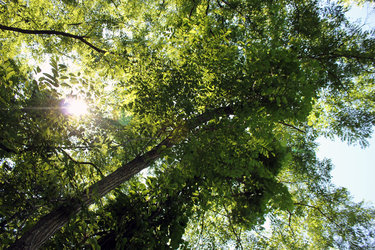Perlee introduces legislation designed to preserve Albany County’s forests
ALBANY COUNTY — It’s not easy being green, but a newly proposed law will try to keep the county on that path.
Legislator Jeff Perlee, of Altamont, introduced legislation in the Albany County Legislature on Nov. 7 that would establish a forest preserve and prohibit the disturbance of county-owned forests that span more than a half-acre unless the county executive places twice the value of the removed trees into a fund to be used to plant more trees.
Perlee told The Enterprise this week that the county owns about 750 acres of forest that would fall under the law, should it pass.
“The idea to replace trees destroyed by development with protecting and planting new trees via the creation of a County Forest Preserve came from the fact that other counties around us, including Schenectady and Saratoga counties have very prominent and effective County Forest Preserves, but Albany County does not,” Perlee said.
“We have some nature trails in Colonie, a great bike trail and a recreational facility down in Coeymans that has a lot of trees,” he continued, “but nothing designed to protect trees and forest, like what is being preserved in our neighboring counties.”
The county is currently evaluating a development proposal for a solar farm on 11 acres of county land between the airport and Ann Lee Pond, which, according to a press release from Perlee’s office, would require cutting “several acres” of black locust trees. Those trees, the release says, are “particularly effective at sequestering carbon from the atmosphere;” the law would have these trees replaced.
“I and my fellow legislators are very supportive of the solar project and because of this we want to make sure that the solar project is an unmitigated success, not otherwise compromised at the outset by an environmental misstep,” Perlee said. “Destroying several acres of mature trees — that are particularly effective at sequestering carbon — without a replacement process would be a regrettable environmental misstep.
“The law is not intended to curb development, rather it’s to ensure that development by the county is in fact net positive for the environment,” Perlee went on. “Why when we are taking steps forward with solar projects would we take a simultaneous step back by destroying trees and not replacing them? It’s just common sense as I see it.”
Perlee emphasized that the law would not have an impact on privately held lands.
He said that the idea of assigning a monetary value to the trees came from Chicago’s Cook County Forest Preserve, which follows the same protocol. Perlee said that he’s been aware that some residents of that county are upset about the construction of former President Barack Obama’s presidential museum in Chicago, the plans for which involve the cutting of several hundred trees.
“The Obama Foundation says that they will replace the trees but the community is upset that there is no requirement or process to do so,” Perlee said. “In that context it’s been suggested that the tree valuation process used by the Cook County Forest Preserve be applied to ensure that the trees are truly replaced … To avoid that kind of controversy here we thought we should be proactive and spell out a tree-replacement protocol for when the county wants to disturb existing forest for future development.”
The county legislation was proposed around the same time that New York State Assemblywoman Pat Fahy announced that she’d introduce the Carbon Removal Leadership Act, a law that will supplement New York’s existing Climate Leadership and Community Protection by implementing a new program through which the state will purchase carbon removal from a growing range of technologies and companies and establish “a clear preference for durable carbon removal over carbon offsets,” according to a press release from her office.
Fahy could not immediately be reached for comment.

